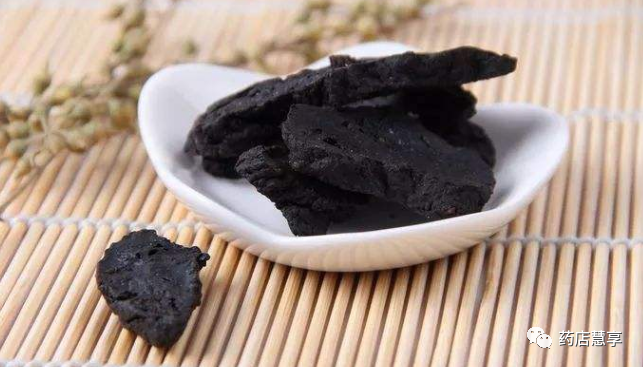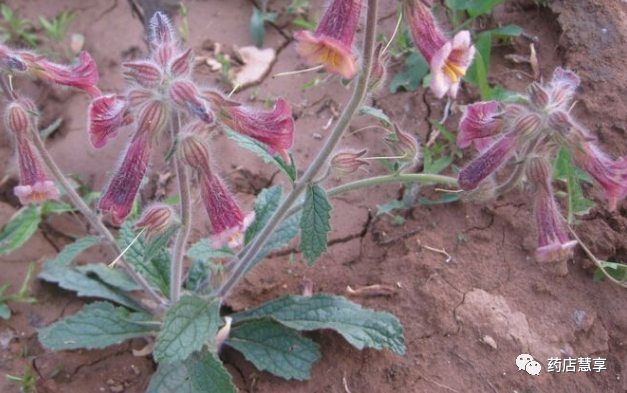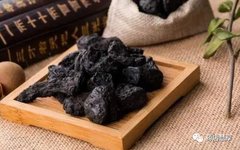
Shudi (熟地), also known as Rehmannia Glutinosa, is a commonly used herb in Traditional Chinese Medicine (TCM) that is known for its blood-nourishing properties. It is a key ingredient in the Si Wu Tang (四物汤), a formula frequently used by women to replenish blood. Shudi has the effects of nourishing yin, replenishing essence, and enriching marrow. The renowned Ming dynasty physician Zhang Jingyue emphasized the importance of Shudi, stating, “Essence is the foundation of form; form is generated by essence; without essence, there is no form.” Therefore, Zhang asserted, “Essence and blood are one; blood is essence, and essence is blood.” He noted that “Shudi has a sweet and slightly bitter taste, thick flavor, and is heavy… it greatly nourishes blood deficiency, nourishes kidney water, fills the bone marrow, benefits true yin, and specifically replenishes the original qi of the kidneys, while also treating the blood-storing meridians…” Shudi is used as the monarch herb in treating chronic enteritis, combined with Huanglian (Huanglian) and Huangqin (Huangqin); for treating wind-cold colds, it is paired with Jingjie (Jingjie) and Fangfeng (Fangfeng); and for kidney yang deficiency, it is combined with Guizhi (Guizhi) and Fuling (Fuling). It is an excellent herbal material and is commonly found in daily life. Its uses are extensive, and it has alleviating effects on various diseases. Shudi is often used to treat conditions such as postpartum weakness and abdominal pain. Let’s learn more about Shudi together with Huixiang Pharmacy!

[Effects of Shudi]
Herbal Name
Shudi (熟地)
Alias
Shudi Huang (熟地黄)
Medicinal Part
The fresh tuber of the plant Rehmannia glutinosa Libosch., processed by steaming and drying.
Geographical Distribution
It is produced in most regions of the country, with significant production in Wenxian, Boai, and Mengxian in Henan Province, known for high yield and quality.
Harvesting and Processing
(1) Take fresh Shudi Huang, and stew it with wine until the wine is absorbed, then take it out, dry it until the outer skin is slightly dry, cut into thick slices or blocks, and dry it to obtain. For every 100 kg of fresh Shudi Huang, use 20-30 kg of yellow wine. (Stewing method: Take the prepared product according to the regulations for each variety, add wine, place in a suitable container, seal, and heat in water or steam until thoroughly cooked, or until the wine is completely absorbed, cool, take out, dry until 60% dry, slice, and dry.)
(2) Take fresh Shudi Huang, steam it until it is black and shiny, take it out, dry it until about 80% dry, cut into thick slices or blocks, and dry it to obtain. (Steaming method: Take the prepared product, sort by size, mix with water or liquid auxiliary materials, place in a suitable steaming container, heat with steam to the specified degree, take out, cool slightly, mix back with the steaming liquid, dry until 60% dry, slice or segment, and dry.)
Nature and Taste
It is slightly warm in nature and sweet in taste. It enters the liver and kidney meridians.
Functions and Indications
Nourishes blood, enriches yin, benefits essence, and fills marrow. It is classified as a blood-nourishing herb under the category of tonifying herbs.
Chemical Composition
The water and alcohol extracts of various Shudi are higher than those of raw and dry Shudi, but the extracts from different processing methods are not significantly different. The unique iridoids and iridoid glycosides in dry Shudi are almost absent in Shudi. Shudi contains 8.57% glucose, which is higher than the content in fresh Shudi (1.56%), indicating that some polysaccharides are converted into monosaccharides after processing. During the processing of dry and Shudi, glycoside components also undergo varying degrees of decomposition, with monosaccharide glycosides decomposing the most, followed by disaccharide glycosides, while the trioside Rehmannioside D (地黄宁甙 D) is almost not decomposed. The differences between Shudi and dry Shudi are not significant except for the decomposition of Catalpol in Shudi, which is less than in dry Shudi.
Herbal Characteristics
This product appears as irregular chunks or fragments, varying in size and thickness. The surface is black with a glossy sheen and has high stickiness. The texture is soft and flexible, not easily broken, with a black and glossy cross-section. It has a faint aroma and a sweet taste.
Plant Morphology
A perennial herb, 10-70 cm tall. The whole plant is covered with grayish-white long hairs and glandular hairs. The roots are thick, fleshy, tuberous, cylindrical, or spindle-shaped. The stem is erect, single or branched at the base. The basal leaves are clustered, with ovate-lanceolate leaf blades, blunt tips, gradually narrowing at the base, extending into long petioles, with a wrinkled surface and irregular serrated edges; the stem leaves are smaller. The flower stalk is erect, hairy, and has a racemose inflorescence at the upper part of the stem; the bracts are leaf-like, either well-developed or degenerated; the calyx is bell-shaped, with 5 lobes at the tip, the lobes are triangular, covered with long soft hairs and white long hairs, with 10 veins; the corolla is wide tubular, slightly curved, dark purple outside, mixed with yellow inside, with distinct purple stripes, with 5 shallow lobes at the tip, slightly bilabiate; there are 4 stamens, two of which are strong, with the anthers forked at the base; the ovary is superior, oval, 2-celled, becoming 1-celled after flowering, with 1 style and a swollen stigma. The capsule is oval or long oval, pointed at the tip, with a persistent flower stalk, surrounded by the persistent calyx. There are many seeds. The flowering period is from April to May, and the fruiting period is from May to June.

[Functions of Shudi]
Indications
Used for thirst, constipation, nourishing blood and moistening, benefiting essence and filling marrow, blood deficiency with sallow complexion, dizziness and palpitations, liver and kidney yin deficiency, tidal fever and night sweats, nocturnal emissions and impotence, infertility, irregular menstruation, excessive menstrual bleeding, lower back and knee weakness, tinnitus and deafness, dizziness, premature graying of hair, and kidney deficiency with shortness of breath.
Pharmacological Effects
1. Replenishes the kidneys
2. Nourishes blood and tonifies deficiency
3. Regulates abnormal hormones in the body
4. Enhances immunity
5. Inhibits thrombosis
6. Lowers high blood pressure
Consumption Methods
Shudi Decoction
Ingredients: 15 grams of Shudi, Method: Decoction in water for 30-60 minutes, take the juice, and divide into 2-3 doses for warm consumption within a day.
Effects: Used for lower back and knee weakness, nocturnal emissions, excessive menstrual bleeding, dizziness, and tinnitus.
Ba Zhen Tang (八珍汤)
Ingredients: 15 grams of Shudi, 10 grams each of Danggui (当归) and Baizhu (白术), 8 grams each of Fuling (茯苓) and Baishao (白芍药), 5 grams each of Chuanxiong (川芎) and Zhi Gan Cao (炙甘草), 3 grams of Ren Shen (人参), 6 grams of Sheng Jiang (生姜), and 3 grams of Da Zao (大枣).
Method: Place all the above herbs in a clay pot, decoct in water for 30 minutes, and take the juice. One dose per day, divided into two warm consumptions.
Effects: This decoction has the effect of tonifying qi and blood, used for pale complexion, dizziness, reduced appetite, and palpitations.
Shou Wu and Shudi Porridge
Ingredients: 15 grams of Shudi, 10 grams of processed He Shou Wu (何首乌), 100 grams of japonica rice, and 15 grams of white sugar.
Method: First, decoct Shudi and He Shou Wu in a clay pot, then use the medicinal juice to cook the japonica rice, adding white sugar before serving. Consume twice daily.
Effects: Health benefits.
Related Combinations
1. Treatment for Impotence: 30 grams of Shudi, 12 grams each of Shan Yao (山萸肉) and fried Baizhu, 3 grams each of Yuan Zhi (远志), Ba Jitian (巴戟天), and Du Zhong (杜仲), 6 grams each of Rou Gui (肉桂) and Fu Shen (茯神), 9 grams each of Ren Shen and Goji Berries (枸杞), 15 grams each of She Chuang Zi (蛇床子) and Rou Cong Rong (肉苁蓉), and 10 grams of Huang Qi (黄芪), with 20 grams each of Da Bao (胎盘) powder and Xian Ling Pi (仙灵脾) (swallowed). For chronic cases (impotence lasting over 3 years), add 1.5 grams of deer antler powder (分冲) or 10 grams of deer horn glue (melted and mixed), with a 10-day treatment cycle. Rest for one week before starting the second cycle. [“Shanxi TCM” 1990; 6(3): 16]
2. Treatment for Elderly Constipation: 30 grams each of Shudi, Danggui, Weilingxian, Baizhu, and He Shou Wu, and 10 grams of Sheng Ma (升麻). Decoction for one dose daily. [“Inner Mongolia TCM” 1991; (3): 15]
3. Treatment for Alopecia Areata: 60 grams each of Shudi and Tu Si Zi (菟丝子), 30 grams each of Danggui, Chuanxiong, and Hang Shao, and 24 grams each of Mu Guo (木瓜), Tian Ma (天麻), and Qiang Huo (羌活), ground into a fine powder, mixed with 586 grams of honey to form pills, taking 10 grams each time, twice daily. Additionally, use a wash for treatment, which has shown good efficacy. [“Journal of Traditional Chinese Medicine” 1963; (7): 14]
Contraindications
Should not be taken by those with spleen and stomach deficiency, qi stagnation with phlegm, abdominal fullness, or loose stools.
Huixiang Pharmacy shares a daily herb to help your pharmacy become more professional and improve performance!


